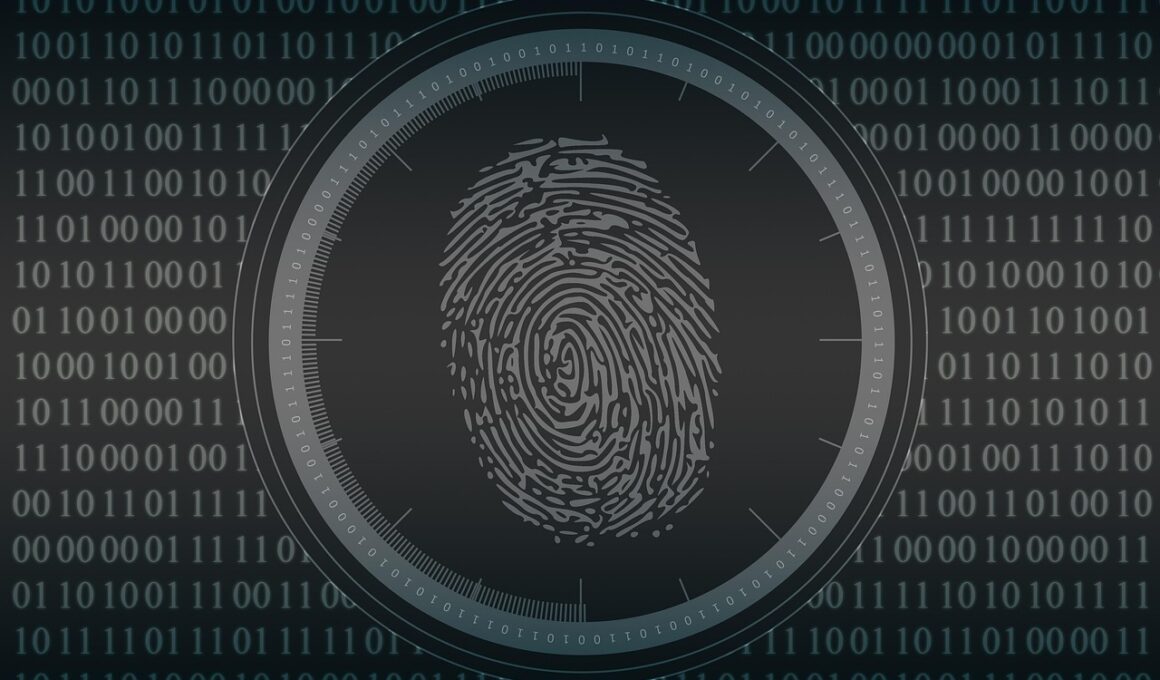Innovations in Multi-Factor Authentication for Trading Platforms
In recent years, the financial sector has experienced an unprecedented surge in cyber threats targeting trading platforms. These systems are pivotal for executing high-stakes transactions, necessitating robust security protocols. One of the most significant advancements is the integration of multi-factor authentication (MFA) techniques, enhancing security frameworks considerably. MFA requires users to provide multiple forms of verification before gaining access to trading accounts. This includes combining passwords with biometric data, such as fingerprints or facial recognition. Additionally, one-time passwords (OTPs) sent via SMS or mobile apps further strengthen security measures. By implementing these strategies, firms can substantially minimize the risks associated with unauthorized access and breaches. As trading platforms evolve, the sophistication of MFA systems continues to grow, incorporating real-time analytics to detect anomalies and flag potential threats. An effective MFA solution can deter fraud motives by making unauthorized access significantly more difficult. As cyber threats increase, understanding the latest innovations in MFA can equip traders and institutions with tools to navigate the digital landscape securely.
Financial institutions continually pursue innovations to uphold security within digital trading environments. At the heart of this endeavor is the effective implementation of regulatory frameworks governing multi-factor authentication. Compliance with standards like PSD2 in Europe mandates enhanced security protocols on authenticated transactions. Consequently, institutions are adopting robust solutions encompassing risk assessment, identity verification, and user behavior analytics. The convergence of technology, such as cloud computing and artificial intelligence, has catalyzed the efficacy of security measures in trading platforms. Features can be tailored to combine standard username and password combinations with mobile-enabled certifications. Also, the use of Artificial Intelligence (AI) can mitigate risks by learning from patterns in user behavior, identifying deviations indicative of fraudulent activities. Likewise, biometric approaches rooted in machine learning enhance efforts to reduce false positives and authentication friction. Deploying a unified MFA strategy is essential for streamlined workflows whilst maintaining usability during the authentication process. Engaging customers in understanding MFA’s importance leads to heightened awareness and increased security measures being taken. These innovations are necessary to navigate the challenges and ensure secure trading practices are established in the financial sphere.
Adapting to Trends in Cybersecurity
The rapid advancement of technology in the financial sector compels ongoing adaptation to evolving cybersecurity threats. As trading volumes soar, the frequency and sophistication of cyberattacks have dramatically increased, prompting the urgent need for enhanced security measures. Smart trading platforms are now leveraging MFA to create a robust security framework that ensures user data integrity. Furthermore, this approach integrates advanced machine learning algorithms capable of identifying potential breaches in real-time. Biometric authentication, such as voice recognition and advanced facial recognition systems, is becoming mainstream. This is aimed at ensuring a seamless user experience while maintaining optimal security. New authentication methods utilize behavioral data like typing patterns or mouse movements, enabling continuous authentication during online sessions. The rise of decentralized finance (DeFi) platforms has also influenced how trading systems approach security, pushing for stronger safeguards against evolving threats. Collaboration among fintechs and cybersecurity firms is pivotal to expedite the development of innovative MFA solutions tailored to industry needs. These multidimensional security measures are crucial for protecting traders and retaining client trust in an increasingly complex digital ecosystem.
For trading platforms, effective user engagement is critical when educating clients about the benefits of MFA. A well-informed user base can actively participate in the security process by adopting precautionary measures. Institutions can achieve this through regular updates, newsletters, and interactive webinars. Transparency regarding security policies fosters trust and encourages users to embrace MFA fully. Additionally, the implementation of user-friendly interfaces for MFA processes mitigates frustration, ensuring smoother interaction with security protocols. Organizations must also emphasize the importance of personal responsibility by encouraging clients to adopt secure practices. Emphasizing the significance of unique, complex passwords alongside MFA can amplify security against phishing attempts. Trading platforms that employ gamification techniques in educating users about MFA could lead to increased engagement and improved security adoption. Rewarding users for taking proactive steps to enhance security can result in greater compliance across user bases. Furthermore, devising an effective communication strategy illustrates the institution’s commitment to user security, aligning with broader industry trends pushing for enhanced cybersecurity standards. By prioritizing education and engagement, trading platforms can elevate MFA’s role as a cornerstone of cybersecurity.
Future Directions for MFA
The trajectory of multi-factor authentication in trading systems is poised for significant innovation as digital landscapes continue to evolve. Emerging technologies such as blockchain can revolutionize how authentication is verified through decentralized identity systems. This approach allows users to maintain control of their identities while minimizing centralized data vulnerability. Simultaneously, advancements in quantum computing present both challenges and opportunities for cryptocurrency and financial platforms. Trading platforms must evolve alongside these technologies, adapting MFA strategies that are not only advanced but also scalable. An emphasis on user experience remains paramount in the development of future MFA solutions. In this regard, seamless integration feels intuitive without compromising security standards. The future of MFA could also see the blend of traditional methods with contextual factors, such as user location or device health, to enhance authentication. Firms will likely shift towards personalization in MFA, tailoring security measures based on individual user knowledge and behaviors, improving effectiveness. By remaining proactive to both new threats and technological advancements, trading platforms can ensure that MFA continues to meet industry demands and client expectations in a rapidly changing environment.
The integration of multi-factor authentication in trading systems enhances user security significantly by providing layered protection. This approach helps safeguard user data against unauthorized access, ensuring that only legitimate users can execute transactions. With cyber threats evolving continually, a proactive response through MFA innovations is indispensable for financial institutions. As awareness spreads regarding the importance of robust strategies, organizations must prioritize investing in security technologies and training. Compliance with cybersecurity regulations is no longer optional but essential, compelling firms to incorporate oxidative approaches in user authentication. Innovations in biometric verification technologies, such as iris and voice recognition, are rapidly being adopted, improving accuracy and security. The shift towards integrating artificial intelligence further revolutionizes monitoring capabilities, ensuring trading patterns are analyzed effectively for irregularities. Furthermore, regular assessments of MFA systems allow organizations to remain vigilant against emerging threats. Financial firms should also develop incident response strategies to address potential breaches swiftly. Looking ahead, the effectiveness of security measures will heavily rely on embracing innovations, user education, and sustained engagement efforts. By committing to such principles, trading platforms can maintain a competitive edge in ensuring secure trading environments amidst burgeoning digital threats.
Conclusion
The financial sector’s adoption of innovative multi-factor authentication strategies reflects a commitment to safeguarding digital trading environments. As markets grow more complex and interconnected, the demand for enhanced security measures becomes paramount. The integration of biometric systems, machine learning, and adaptive risk assessments signifies a transformative shift in how institutions protect users. This shift fosters a culture of security awareness among traders, as understanding evolves surrounding MFA’s essential role in safeguarding assets. Training and proactive communication are vital for maintaining user trust and encouraging risk-averse behaviors in financial trading. As technology progresses, firms must remain agile to incorporate scalable and flexible MFA mechanisms suited to diverse user needs. By prioritizing advancements in security, organizations can effectively mitigate risks and protect assets against evolving cyber threats. The future of trading depends significantly on balancing security and usability, thereby ensuring a seamless experience for all users without compromising integrity. As financial technology continues to evolve, staying at the forefront of secure trading practices through innovative MFA solutions will help organizations achieve their strategic goals while instilling confidence among clients.
This includes combining passwords with biometric data, such as fingerprints or facial recognition.


